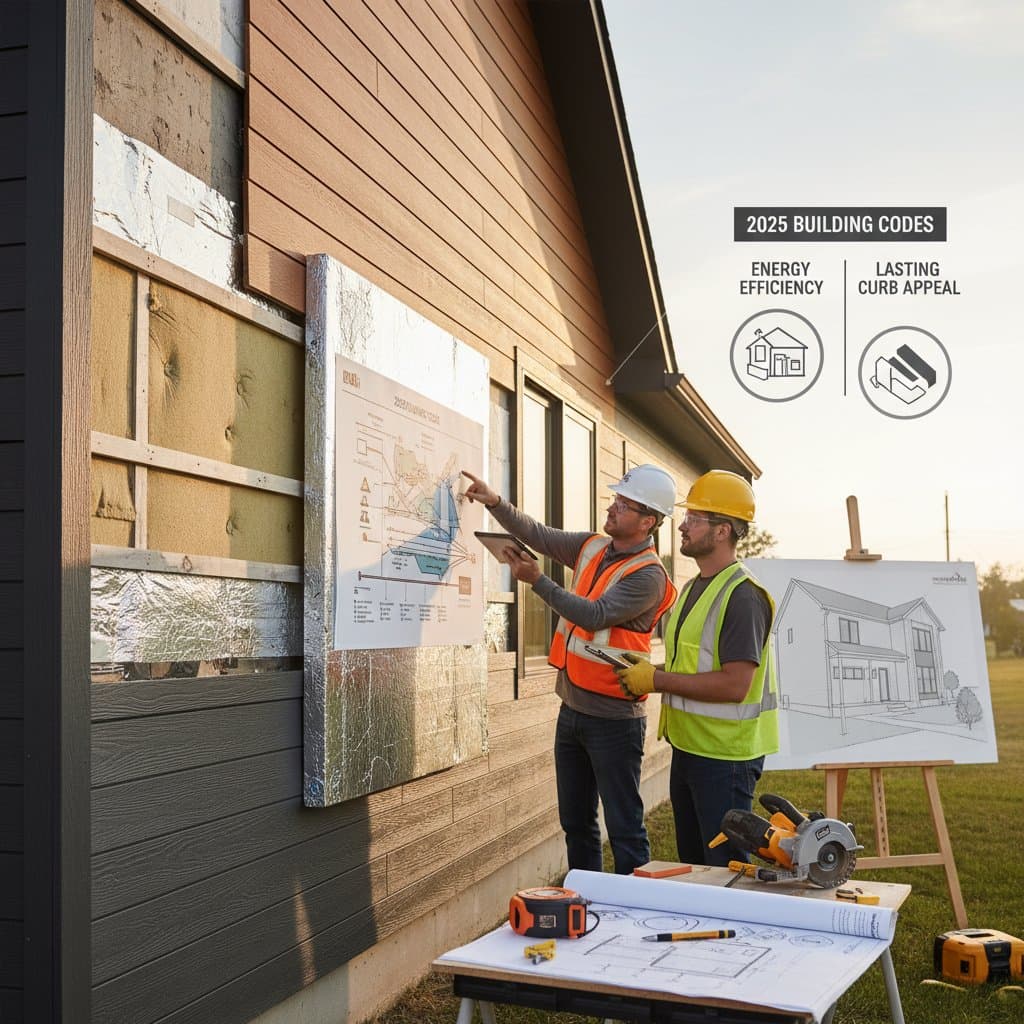Understanding 2025 Siding Codes by Climate Zone
Homeowners embarking on exterior renovations must grasp the implications of the 2025 siding codes. These regulations emphasize energy efficiency and resilience against local weather patterns. By categorizing requirements according to climate zones, the codes guide selections in materials, insulation, and protective layers to prevent issues like moisture intrusion or thermal loss.
Climate zones divide regions into categories such as very cold, cold, mixed-humid, and hot-dry. For instance, very cold zones demand robust insulation to retain heat, while hot-humid areas prioritize vapor barriers to manage condensation. Familiarity with your specific zone, often determined through local building department resources, streamlines planning and avoids compliance pitfalls.
These codes integrate with broader energy standards, requiring wall assemblies that achieve minimum R-values for thermal resistance. Inspectors verify adherence during permitting and final walkthroughs, making upfront preparation essential for smooth project execution.
Evaluating Costs and Return on Investment
The 2025 updates elevate the complexity of wall assemblies, directly influencing project budgets. Factors like required R-values, air sealing, and drainage systems vary by zone, adding layers to traditional siding installations. Homeowners benefit from calculating these elements early to forecast expenses accurately.
Consider typical cost breakdowns for siding replacements:
- Small-scale projects covering under 1,000 square feet range from $10,000 to $18,000, including basic material and labor.
- Mid-sized efforts spanning 1,500 to 2,000 square feet fall between $20,000 and $35,000, accounting for moderate complexity.
- Larger undertakings exceeding 2,500 square feet can total $40,000 to $65,000, especially with multi-story access or intricate details.
Primary expense contributors include demolition of existing siding, waste disposal, scaffolding for elevated work, custom window integrations, and zone-specific insulation upgrades. In colder climates, continuous insulation boards increase material costs by 15 to 25 percent but yield savings on utility bills over time. Humid regions may necessitate permeable house wraps, adding to initial outlays yet reducing mold risks.
Return on investment shines through energy reductions and property enhancements. Compliant installations often boost resale values by 5 to 10 percent, as buyers favor documented efficiency. Consult local maps from energy departments to align specifications, minimizing rework and maximizing financial returns.
Enhancing Design for Aesthetic and Functional Appeal
While codes set technical boundaries, design choices define a home's character and marketability. Homeowners retain flexibility in selecting profiles, colors, and accents that harmonize with architectural styles. Thoughtful integration ensures the project not only complies but also elevates visual presence.
Focus on these design principles to achieve balance:
- Align siding orientations with the home's proportions, using vertical panels on taller facades for elongation.
- Apply contrasting shades to trim elements, creating depth without overwhelming the primary surface.
- Maintain color harmony across all sides, selecting undertones that echo natural surroundings.
- Highlight entryways through strategic accents like durable lanterns or numeric plaques.
- Confirm that accents, such as vents or soffits, satisfy identical durability criteria as the core siding.
Neutral palettes with subtle accents photograph effectively for listings and suit diverse neighborhoods. In sun-exposed arid zones, reflective lighter tones mitigate heat absorption, preserving material integrity. Such selections amplify perceived value, often justifying premium investments through broader buyer appeal.
Strategies for Maintenance and Durability
Post-installation vigilance sustains the siding's performance and warranty validity. Regular upkeep addresses wear from environmental exposure, preserving both aesthetics and structural integrity. Establish routines tailored to your climate to extend the lifespan of the investment.
Implement this maintenance schedule:
- Biannually, clean surfaces using gentle water streams and neutral detergents to remove debris.
- Yearly, examine sealant applications, attachment points, and edge connections for deterioration.
- Every five years, apply fresh coatings to prevent fading or cracking.
- Following severe weather events, survey for shifts in panels or protective elements.
Steer clear of high-pressure cleaning methods above 1,500 psi, as they risk infiltrating water and compromising seals. Materials like fiber cement respond well to proactive repainting, while vinyl options require minimal intervention beyond inspections. Document all activities in a maintenance journal to facilitate warranty processes if repairs become necessary.
Securing Long-Term Benefits from Code-Compliant Siding
Adhering to 2025 climate codes equips homes with superior envelopes that withstand seasonal demands. Energy performance improves, leading to lower operational costs and greater comfort. Compliance documentation reassures future owners and supports favorable appraisals.
Retain detailed records of installed components, achieved insulation levels, and official approvals. These assets underscore the project's quality during sales. Ultimately, precise material choices, expert installation, and consistent care forge a resilient exterior that endures, safeguarding value for generations.

